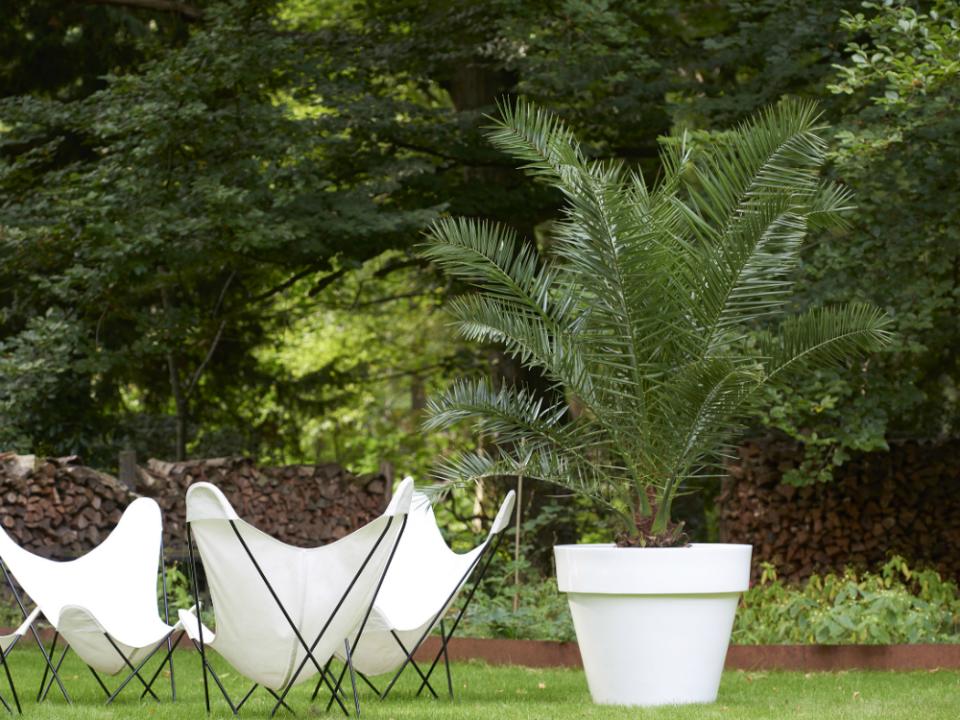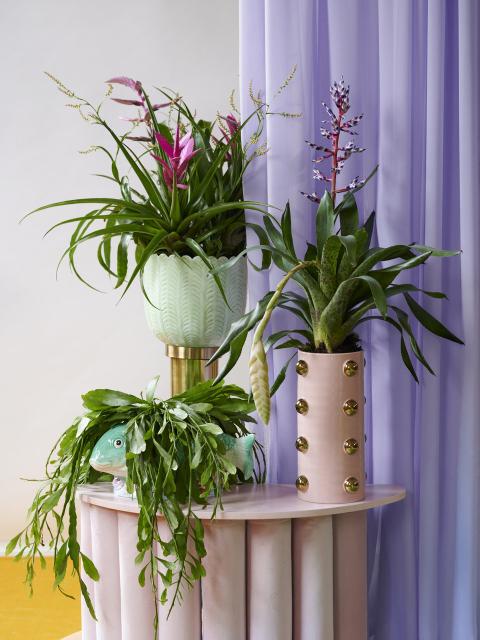You may know Phoenix, also known as the date palm, from your travels to southern Europe, North Africa or the Canaries, where you often encounter this palm tree. With its thick trunk and large feathered leaves the palm lends an extra-tropical flavour to the street scene. Phoenix consists of two types of palm tree, the P. canariensis (date palm) with rugged, upward-pointing feathered leaves, and P. roebelenii (pygmy date palm) with softer, more elegant curved leaves. These are available in various heights, up to some three metres, sometimes even with several specimens in a single pot. They won’t grow as big as they do in our favourite holiday destinations, but Phoenix certainly evokes that holiday feeling. Phoenix is best used as a container plant which must overwinter frost-free and can be placed outdoors from April to October.
Origin
Phoenix canariensis originates from the Canary Islands, and P. roebelenii comes from Laos and Indochina. The symbolic meaning of the date palm is linked to Jesus’ arrival in Jerusalem on Palm Sunday. The Jews waved palm branches as he made his triumphant entry into the city.
Trivia
- The Phoenix canariensis produces dates, but it will be difficult to get these to grow on your palm tree in a temperate climate. Most dates are therefore imported from production countries including the Canary Islands.
- Phoenix is a member of the Palm family, like the container plants Chamaerops, Washingtonia and the very hardy Trachycarpus.
- Phoenix can also be used effectively as a houseplant or in offices thanks to its air-purifying properties.






